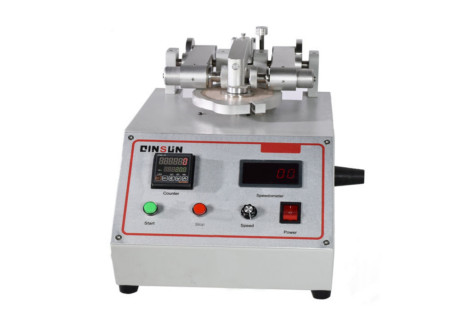Site: Home > Home > News and events
When choosing a plastic scratch tester, consider the following factors to ensure you make an informed decision:
1. Testing Method: Determine the specific testing method you want to employ for plastic scratch testing. There are different methods available, such as linear scratch, circular scratch, or Rockwell scratch, each offering unique advantages and suitability for different applications. Choose a tester that supports your desired testing method.
1. Load Range: Consider the load range required for your testing purposes. Different plastic materials may have varying hardness and scratch resistance, so ensure the tester you choose can apply a range of loads suitable for your specific materials and testing requirements.

1. Tip Geometry: The tip geometry of the indenter used in the scratch tester is crucial. Different tip shapes (e.g., conical, spherical, pyramid) can affect the scratch characteristics and the results obtained. Select a tester that offers interchangeable or customizable indenter tips to accommodate different testing needs.
1. Measurement and Analysis: Evaluate the capabilities of the tester for measuring and analyzing scratch parameters. Look for features such as automatic measurement of scratch width and depth, imaging capabilities for visual inspection, and software for data analysis and reporting. These features can enhance the accuracy and efficiency of your testing process.
1. Standards Compliance: Check if the tester complies with relevant industry standards or testing methods for plastic scratch testing. Standards such as ASTM D7027 or ISO 1518 provide guidelines for scratch testing procedures and parameters. Choosing a tester that aligns with recognized standards ensures consistency and comparability of test results.
1. Ease of Use and Safety: Consider the ease of operation and safety features offered by the tester. Look for intuitive controls, user-friendly interfaces, and safety mechanisms to protect the operator and the equipment during testing.
1. Budget and Support: Assess the pricing of the tester and consider your budget. Compare prices from different suppliers while keeping in mind the quality and features offered. Additionally, consider the availability of technical support, warranty, and maintenance services provided by the manufacturer or supplier.
By considering these factors, you can choose a plastic scratch tester that meets your specific testing requirements, provides accurate and reliable results, and fits within your budget.
Copyright 2022:Qinsun Instruments Co., Limited
High-end textile tester supplier Email:info@qinsun-lab.com | Textile Testing Equipment pdf | Tel:021-67800179 |